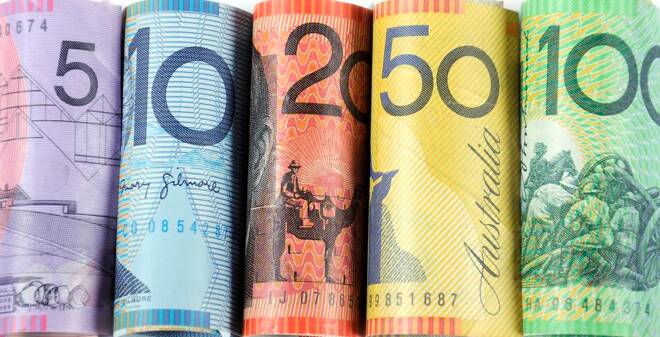Advertisement
Advertisement
AUD/USD and NZD/USD Fundamental Daily Forecast – RBA Announces First-Ever Quantitative Easing Program
By:
The RBA will buy Australian government bonds as part of its first-ever quantitative easing program, and provide a three-year funding facility to provide cheap loans for Australian banks.
The Australian Dollar took back more than 50% of its weekly loss on Friday. It was a pretty strong bounce, but it didn’t change the trend. However, it did highlight the unusual volatility in the marketplace.
The Aussie actually started to rally the previous session. Just before the Reserve Bank (RBA) made another rate cut to a record low 0.25 percent and announced extraordinary measures to help prevent a coronavirus-driven recession, the Australian Dollar plunged to its lowest level since October 2002, trading at 55.10.
On Friday, the AUD/USD settled at .5803, up 0.0060 or +1.04%.
RBA Slashes Rates to Record Low
The Reserve Bank of Australia (RBA) cut interest rates to record lows and moved to pump billions into the financial system in an emergency bid to pull the economy out of a pandemic-induced free-fall.
The RBA cut its benchmark cash rate by a quarter of a point to 0.25 percent, making it the latest lender-of-last resort to announce emergency measures during the fast-moving crisis.
Additionally, the RBA will buy Australian government bonds as part of its first-ever quantitative easing program, and provide a three-year funding facility to provide cheap loans for Australian banks.
In turning to quantitative easing, the central bank is using a lever that it has not used even during some of the worst catastrophes in recent history, including the global financial crisis and the 9/11 terrorist attacks, ABC New Australia reported.
RBA Governor Lowe Speaks
RBA Governor Philip Lowe said the bank would hold the cash rate at 0.25 percent ‘until progress is being made towards full employment and it is confident that inflation will be sustainably within the 2-3 percent target band”.
Dr. Lowe said the cash rate could be at this level for some years as it was expecting significant job losses.
The latest rate cut was “a substantial easing of monetary policy” and brought the cash rate in line with a number of other countries as a result of actions by the U.S. Federal Reserve (Fed), the Bank of England (BOE) and the Reserve Bank of New Zealand (RBNZ).
“Before the coronavirus hit, we were expecting to make progress towards full employment and the inflation target, although that progress was expected to be only very gradual,” he said.
“Recent events have obviously changed the situation.”
Dr. Lowe said he was not able to provide an updated set of economic forecasts because “the situation is just too fluid.”
“But we are expecting a major hit to economic activity and incomes in Australia that will last for a number of months,’ he said.
“We are also expecting significant job losses.”
Short-Term Outlook
Since the short-covering rally came after the latest moves by the RBA, we have to assume that short-sellers were waiting for aggressive quantitative easing and had been pricing it in. Once they received the news they were looking for, they decided to lighten up on the short-side and take a little money off the table.
About the Author
James Hyerczykauthor
James is a Florida-based technical analyst, market researcher, educator and trader with 35+ years of experience. He is an expert in the area of patterns, price and time analysis as it applies to futures, Forex, and stocks.
Did you find this article useful?
Latest news and analysis
Advertisement
